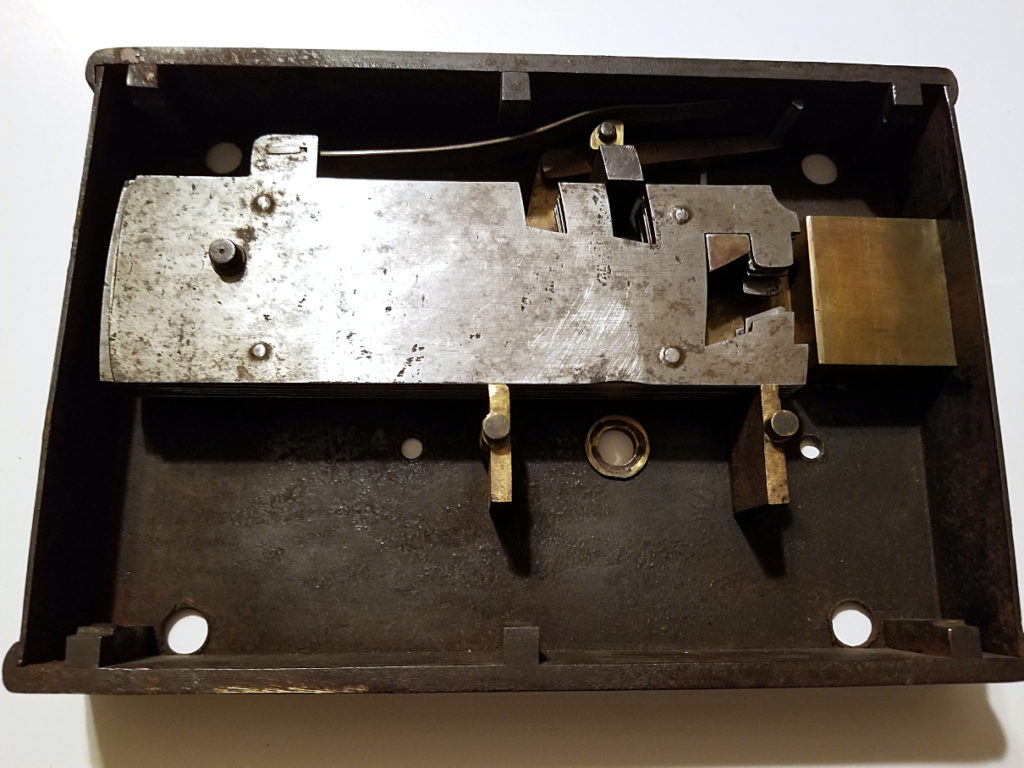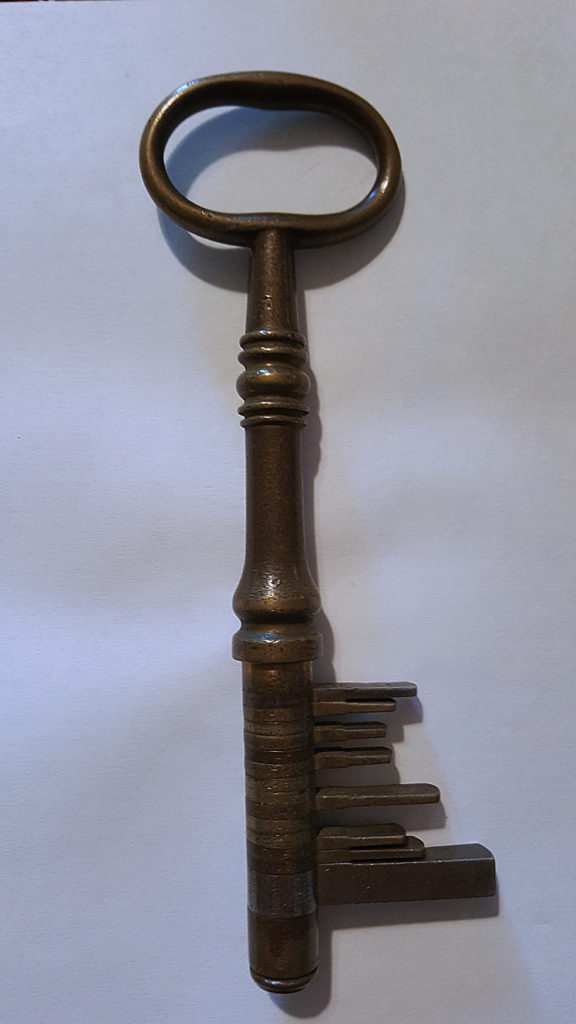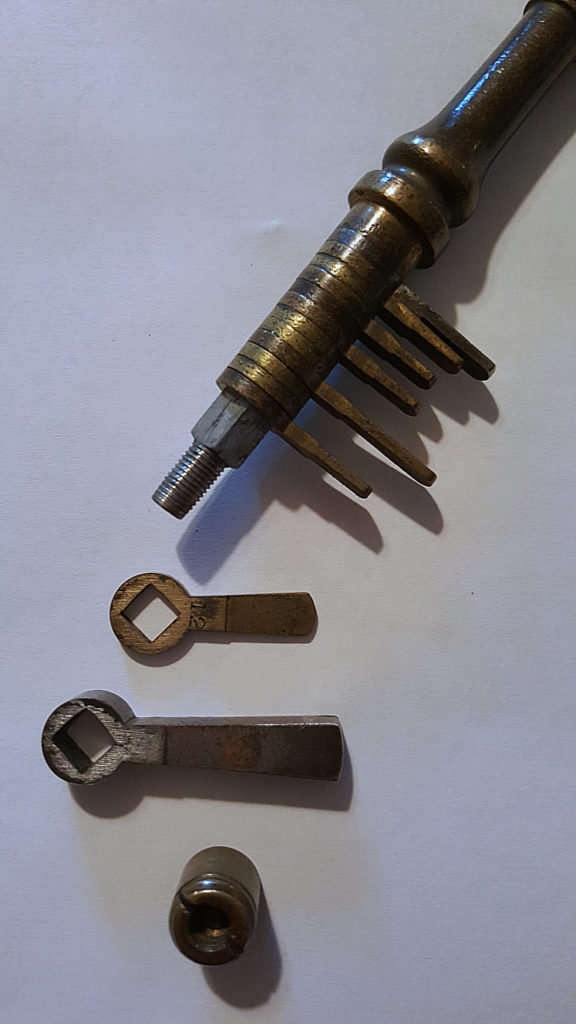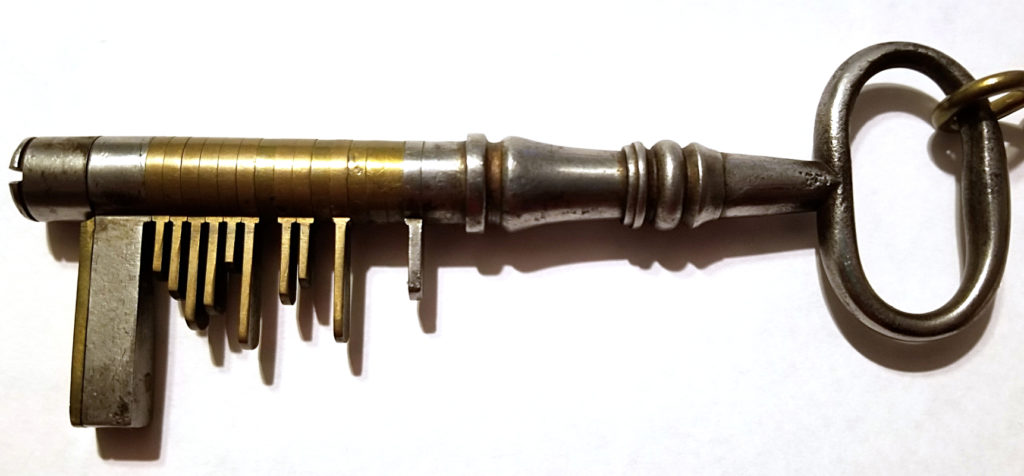Solomon Andrews – 1836

Close-up View of Lock Internals
Patent X9310 Patented January 11, 1836 by Solomon Andrews of Perth Amboy, New Jersey. Fortunately, a copy of this X patent (destroyed in the patent fire of 1836) was recently located, so those interested in reading all the details can do so at the link above. | 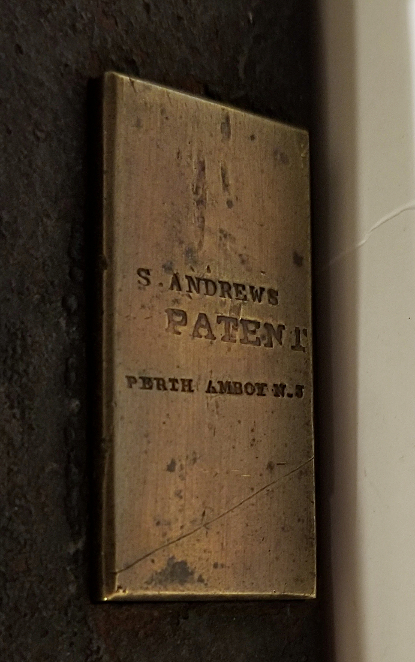 Markings on Bolt of Lock |
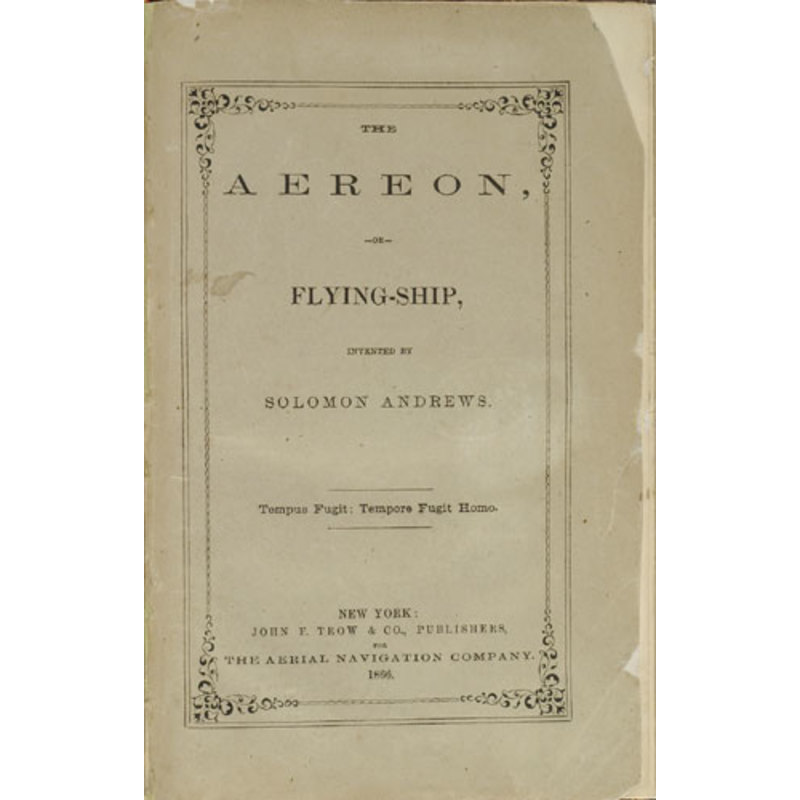
Solomon Andrews was a doctor, man of many talents, and a lifelong inventor. He has his own Wiki page here for more information about his life and other inventions like his Aereon flying ship.
Image on the left is of a Catalog from his Aereon flying-ship. The catalog was sold in 2003, with additional information on Solomon Andrews and his Aereon in the auction listing here.
The lock shown above is a 9 lever version, 10 inches in length. It would have been utilized as a secondary lock on a bank where a larger lock already was installed. It was originally priced at $100 (~$1,500 in 2019 terms) and featured 510 changes and came with 2 keys in its standard offering. While this lock was not the first to feature re-keying as commonly thought (see article on James Kyle), this lock was the first safe lock to be originally patented in the United States that achieved market success and paved the way for future success stories for American safe lock manufacturers. The lock featured a more convenient method for re-keying. The bits on the key could be changed out with spacers to allow for re-keying without needing to take the lock apart, something James Kyle’s lock lacked. This lock could also be re-keyed by taking apart and re-arranging the levers and bits similar to James Kyle. The simpler method of re-keying allowed for more frequent key changes and easier to remember bit configurations.
Originally, this lock came without a detector mechanism (to detect picking attempts), but this feature was later added on. It can be seen at the top of the lock in the photos above. Unlike a Chubb style detector (seen in the Gaylor lock here), it does not use the original key to reset. Once the safe is opened with the correct key, the tripped detector is visible from the inside of the safe. Another later addition to the lock is a set of underbelly levers (not shown in the lock above). These levers allow the key to act on a secondary set of levers which interact with the main set of levers. They would reside around the keyhole area in the photo above pressing upwards on the main levers. The example shown above is a hybrid of the two, with the detector, but without the underbelly levers dating it likely to around 1840.
The images above show two examples of keys for Solomon Andrews locks (for a much larger lock than shown above). The bits of the key can be removed from the central shaft to be re-arranged or replaced with a spacer. Several examples of the spacers are visible. The material of construction is both brass and steel.

